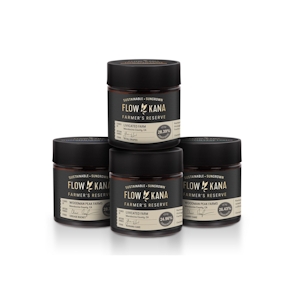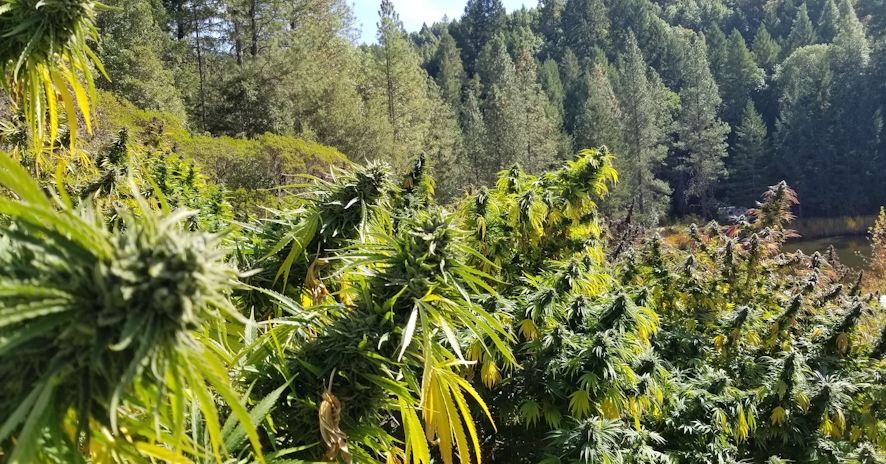
Woodman Peak Farms. Photo courtesy of Flow Kana
The Benefits Of Sun-Grown Cannabis: Here’s Why It’s Better Than Indoor
I like being friends with the sun, here's why you should always choose sun-kissed bud. Created with Flow Kana.
We all know what sun-grown weed is, right? Well, it’s just that; grown under the sun. Plain and simple, yea? Maybe for small single plants, but if you have a farm or anything more than the 6 plants allowable by some state laws, then you know there’s a lot more at stake here.
Farming is an enormous commitment and takes a massive amount of team effort. We appreciate all the farmers that put all their love into their grows, indoor and outdoor.
In short, both have benefits, and both have downfalls, but if you want to experience the full power of cannabis, sun-grown is the way to go.
Outdoor cannabis plants are vulnerable to weather, but indoor grows use a lot more energy and typically have a higher carbon footprint on the planet.
We’ll talk more about indoor vs. outdoor grow methods below; for now, let’s focus on the sun-grown beauties.
Why Choose Sun-Grown?
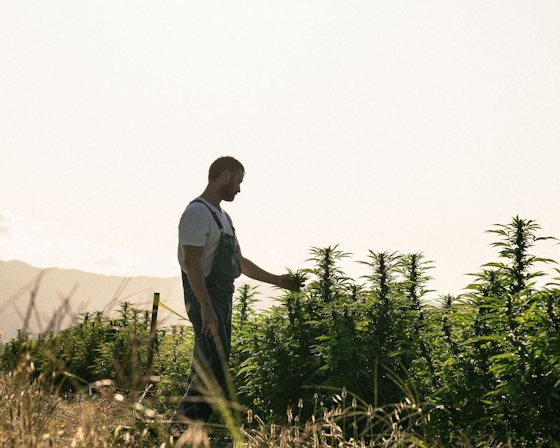
Beija Flor. Photo courtesy of Flow Kana
There is nothing like enjoying the outdoors under the warmth of the sun. Why should it be any different for plants? This is what sets sun-grown cannabis apart from indoor cultivated buds. The natural sunlight permeates the plant and gives a special quality to its cannabinoids.
With the necessary factors like access to water and nutrients, this method allows growers to produce high-quality organic cannabis since it’s free from pesticides and other harmful chemicals.
Outdoor, whether out in the open or in a greenhouse, allows more sun to penetrate your plants to bring out a very robust bud that is full of terpenes, flavonoids, and cannabinoids.
We see indoor growers marketing lighting to be more like the sun, but you can’t get any more like the sun than the actual sun. Terpenes and cannabinoids are the response to the intensity of that massive star. It’s not just the UV but also the wavelengths that photosynthesis happens under that play a role in the plant’s growth.
The terpene profiles that come from sun-grown are generally better than what comes out of the one-dimensional, very specific light waves that you get with artificial lighting. And sun-grown cannabis has higher cannabinoid levels overall, compared to indoor.
The environment that you’re growing in is critical, whether it’s indoor or outdoor. Obviously, not all farming locations are created equally. In fact, they require a lot of attention; you’ve just got to be able to figure out how to best support the plant given the conditions.
This takes many years of trial and error to determine what best works for the strain you are growing.
A few brands have mastered sun-grown, but if you want to experience the best sun-kissed cannabis the US has to offer, try Flow Kana’s Farmer’s Reserve collection. They partner with small-batch, independent farms in California’s legacy growing regions to provide consumers with the pinnacle of outdoor weed.

Birds and Stones Farm. Photo courtesy of Flow Kana
It’s California’s famous Emerald Triangle flower, packed with cannabinoids, terpenes, and flavonoids. And that means it’s better for your body, and your high (it’s the fullest expression of the cannabis plant), and the planet.
Sustainability
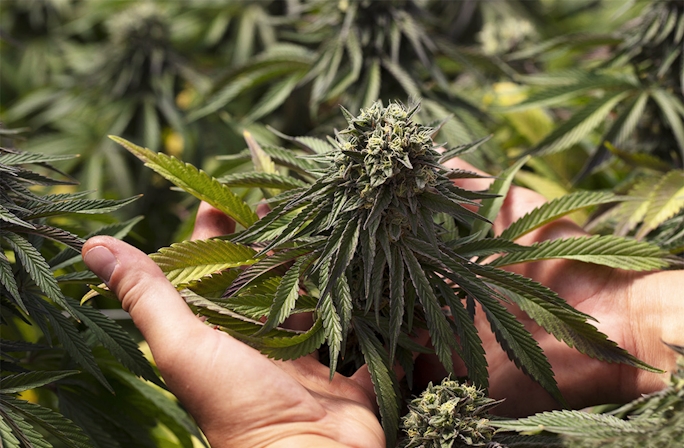
Birds and Stones Farm. Photo courtesy of Flow Kana
We are aiming to live in an eco-conscious culture. Back in the day, patients never had the opportunity to ask their drug dealer if their pot was sustainably farmed. Now, as a consumer, you have that option; nay, responsibility, just as you do with all the other choices you make.
As hemp is known to decontaminate soil, sun-grown plants naturally produce easy-to-use, potent cannabis. These plants are grown without pollution and chemicals, so you will experience a more aromatic high.
One of the benefits of organic farming is minimizing environmental impacts. Organic nutrients are often more sustainable than alternatives. Many nutrients used for indoor grows require extensive processing, which often uses more energy than is necessary.

Livicated Farm. Photo courtesy of Flow Kana
Organic fertilizers can reduce your energy consumption and improve your sustainability. This, in turn, will lead to less environmental impact.
Indoor grows, in contrast, have environmental impacts comparable to those of large manufacturing industries. Most indoor grows occur in basements or sheds where basically everything is powered by electricity.
High intensity grow lights, ventilation, heating, humidity controls… It’s a lot. Growing one kilogram of indoor cannabis from seed to harvest requires eleven times more energy than what it takes to drive from New York City to LA.
Terpene Profile & Potency
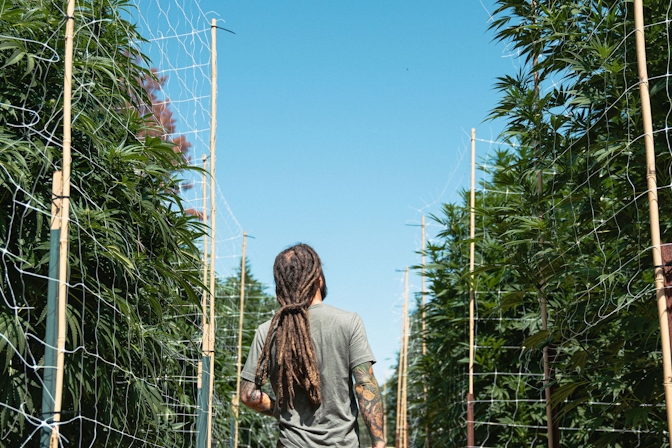
Livicated Farm. Photo courtesy of Flow Kana
When we think of producing a certain flavor or aroma, we will most likely think of terpenes and cannabinoids. The terpene profile tastes better, it’s more effective as a medicine, and the potency can be as strong if not stronger with cannabis grown under the sun.
To grow cannabis seeds, you need to mother them, test them, get their terpene and cannabinoid profiles, rate them, and then decide which one you want to grow. That’s a lengthy process to come up with strains that you want to market or even for personal grows.
When conditions are optimal, the yield is similar, if not better, than indoor methods. This is in part because of the abundant availability of organic and rich soil. The bud from an outdoor cannabis farm is a treasure.
Weed grown in natural sunlight contains a multitude of terpenes that simply can’t be achieved in a grow room.
Chasing THC

Kingsview Farm. Photo courtesy of Flow Kana
In recent times, the trend in the cannabis world has been to grow strains with an increasingly high THC content.
Most THC-packed strains are grown indoors, as they require specific, almost unnatural light exposure levels that are primarily achieved through artificial lighting.
Some might find it exciting to smoke weed with 35% THC. However, more THC does not necessarily translate to better highs. We could argue it’s the opposite.
Cannabis that is grown to maximize THC pushes out terpenes and minor cannabinoids from the plant. When smoked, this high THC bud delivers a one-dimensional, THC-focused high that may be overwhelming for some.
Sun-grown cannabis can still match those high potency indoor strains when the conditions allow it, but even when it doesn’t, the high is better.
When grown under the sun, cannabis gets the ideal amount of natural light that promotes the development of THC, terpenes, flavonoids, and minor cannabinoids that combined enhance the Entourage Effect, thus delivering a well-balanced, more enjoyable high.
Indoor vs Outdoor
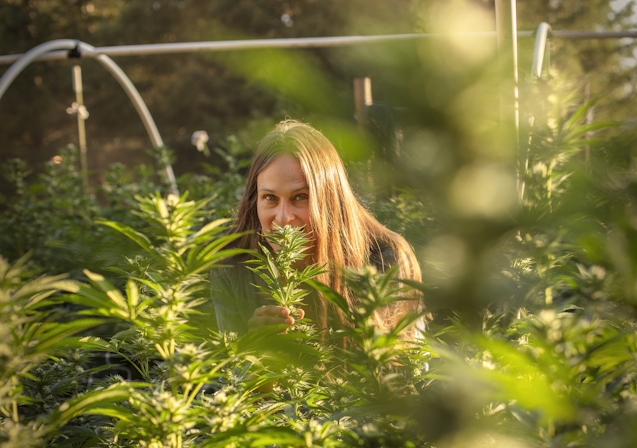
Kingsview Farm. Photo courtesy of Flow Kana
Obviously, both have benefits and downsides. Economically speaking, outdoor labor costs are actually higher than indoor operations because they are so demanding.
Indoor grows have much more control over the plants’ environment. Outdoor grows couldn’t have that level of control and manipulation. When grown indoors, you can control all aspects of the environment.
You can set your desired light, temperature, and humidity, as well as give the perfect amount of CO2 for optimal gain. It may seem like less work, but both methods of growing require a lot of attention to detail.
Having to control the plants’ life cycles, maintaining nutrition for the perfect results, it’s like having a child. Your whole life becomes theirs and that love is the most beautiful thing in the world.
Who Wins?
To sum it up, every method of growing has its perks and downsides. However, if you want to experience the full potential of cannabis, sun-grown is the way to go.
Flow Kana, for example, is the leading brand in sun-grown cannabis in California.
No matter what way you choose to buy, just make sure you do all the research, from where it comes from to how it was grown.
In summary, you buy the weed you like. But if your choices are based on taste, a full-spectrum high, the benefits of the Entourage Effect, sustainability, knowing where your weed comes from, you can’t go wrong with sun-grown.
Herb Recommended Products:
READ MORE


